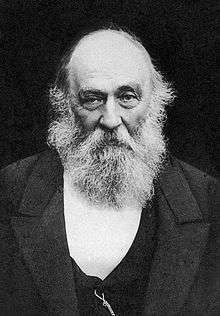Carl Friedrich Schmidt (1832)
Carl Friedrich Schmidt (Russian: Фёдор Богданович Шмидт, Fyodor Bogdanovich Schmidt; also known as Friedrich Schmidt; 27 January [O.S. 15 January] 1832 in Kaisma, Livonia – 21 November [O.S. 8 November] 1908 in Saint Petersburg) was a Baltic German geologist and botanist in the Russian Empire. He is acknowledged as the founder of Estonian geology.[1] In the mid-19th century, he researched Estonian oil shale, kukersite, and named it as kuckers.[1][2]

Main papers of Friedrich Schmidt research the stratigraphy and fauna of Lower Palaeozoic rocks in Estonia and the neighboring areas. In 1885 he became academician of St. Petersburg Academy of Sciences.[1] He won the Wollaston Medal, awarded by the Geological Society of London, in 1902.[3]
Friedrich Schmidt was the first European to "discover" the Sakhalin Fir on the Russian island of Sakhalin in 1866, but he did not introduce it to Europe.
Notes
- Aaloe, Aasa; Bauert, Heikki; Soesoo, Alvar (2007). "Kukersite oil shale" (PDF). Tallinn: MTÜ GEOGuide Baltoscandia: 31. ISBN 978-9985-9834-2-3. Retrieved 2013-03-16. Cite journal requires
|journal=(help) - Lille, Ü. (2003). "Current knowledge on the origin and structure of Estonian kukersite kerogen" (PDF). Oil Shale. A Scientific-Technical Journal. Estonian Academy Publishers. 20 (3): 253–263. ISSN 0208-189X. Retrieved 2008-10-25.
- "The Geological Society of London". The Times (36699). London. 24 February 1902. p. 6.
- IPNI. F.Schmidt.